
Western Nebraska, the region past Kearney when you follow the sun onto the frontier of the Great Plains, is famously recognized for its Sandhills, the remnants of the retreat of vast oceans that covered parts of the North America continent eons ago.
It’s an area encompassing more than a quarter of the state that features mixed-grass prairie on sand dunes of various sizes – land that is almost perfect for golf courses, especially the links-style golf more commonly found in coastal areas.
It’s here, on the rim of the Snake River Canyon near Valentine, where golfers find The Prairie Club, an ultra-posh and fabulous resort with two spectacular 18-hole courses, a 10-hole short course that is such fun, an expansive 40,000-square-foot clubhouse, three dining areas and lodging – both in the main Lodge and in cabins and a bunkhouse on the property.
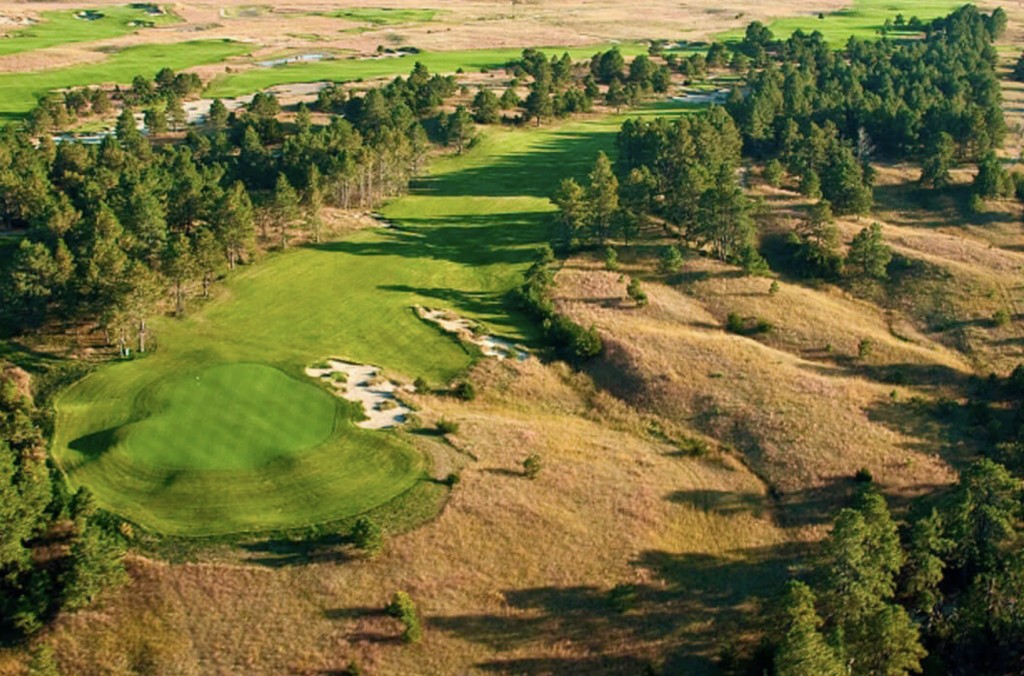
Shades of Ireland
Playing golf in the Sandhills is like finding Ireland in the middle of the United States. It is without question the most unique golfing terrain in the country – a sprawling, scrubby and desolate 20,000-square-mile area that’s the largest area of sand dunes in America.
The land is well-suited for golf because of the undulating topography, the flora and fauna (with more than 700 species of plants and 300 animal species) and the sheer isolation of it all. You have to really want to get there to get there.
Golf in this region was kickstarted in 1995 by Ben Crenshaw and Bill Coore’s “finding” of the course that became Sand Hills Golf Club. The Sandhills is a haven for great golf and a pilgrimage for those who love to where you can really get away from it all.
The Prairie Club debuted in 2010 and features the Pines Course (designed by Graham Marsh) and the Dunes Course (fashioned by Tom Lehman and his lead associate, Chris Brands). Then there’s the Horse Course, a fun 10-hole par-3 facility by Gil Hanse that’s without defined yardage and perfect for a casual knock-around round to determine whose short game and putting skills are the best.
The Pines Course is a little bit of everything
The Pines Course is a semi-parkland design that combines the open prairie and a ponderosa forest on a routing adjacent to the Snake River Canyon. Its challenge is defined by its putting surfaces’ subtle movements and occasional larger undulations. The course plays to a par of 73 and at 7,403 yards.
There are blind and semi-blind shots from a handful of the back tee boxes. Drives are played to fairways that are mostly generous but not massive, which adds some intimacy to the round while not jeopardizing playability if the winds are up.
The setting is memorable – corridors of verdant fairways cut through 100-foot-tall ponderosa pines, the river’s edge and the occasional move through the prairie. The Pines Course is protected from some of the winds by the western wall of the canyon and by the site’s thick, tall trees. The package makes the course testing stunningly beautiful and so memorable.
The Pines Course reminds some of rounds played in the mountain foothills except without the altitude.
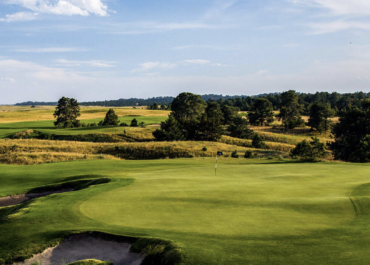
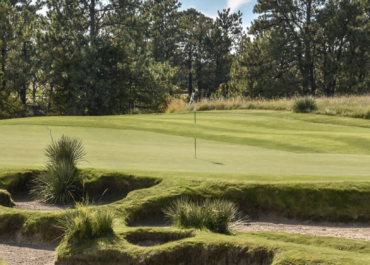
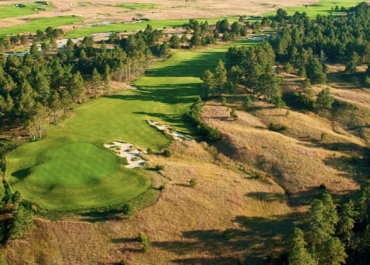
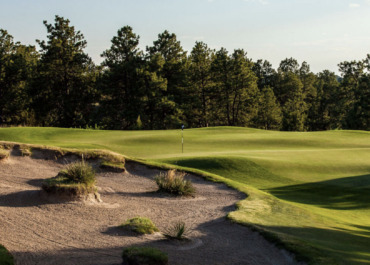
The expansive Dunes Course steals the show
Despite the overall quality of the Pines Course, it’s the Dunes Course that steals the show at The Prairie Club. Lehman and Brands, who spent 16 months just identifying the 18 holes out of “hundreds” they could have picked, have partnered the huge dunes with similarly massive fairways.
The radical width disguises how intricate a design the Dunes really is, though. There are times when a hole with a hundred-yard-wide fairway has an optimal line of play that’s actually over the rough.
The back tees here stretch to 8,073 yards (!) and the Dunes is a par-73. It’s by far the most expansive golf course I have ever seen and a compelling round from first tee shot to final putt, thanks to a combination of inspired bunkering, massive width and genius greens complexes.
With so many sets of tees, dozens of possible hole locations and cleverly placed fairway bunkers (and an ever-present, constantly switching wind), the course has very different feel every time it’s played.
The Dunes Course has it all – dramatic elevation changes, endless views of the Sandhills in every direction and immense blowouts that are so large they can be viewed from above by satellite. Golfers revel in the challenge posed by the course’s wind-shaped landscape and massive rolling seascape of prairie grass.
Lovers of links-style golf understand the need to keep the ball low in the wind and use the ground to position your ball on the massive putting surfaces, which average 14,000-square feet.
The Dunes Course ranks No. 22 on Golf Magazine‘s top 100 courses you can play in America. Virtually treeless and without a single water hazard or forced carry, the Dunes Course plays like a coastal links with firm-and-fast conditions and a constant breeze.
The staff estimates that the wind blows an average of 20 mph every day, so it is no wonder the Dunes Course tends to blow golfers away, literally and aesthetically.

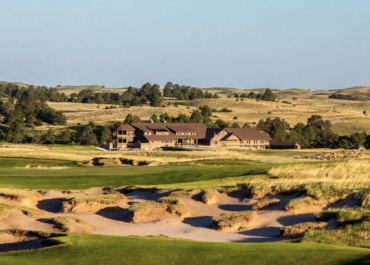
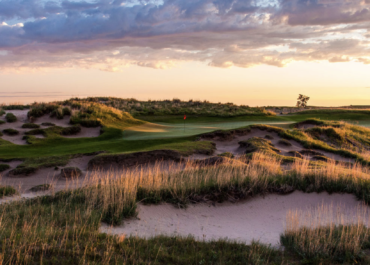
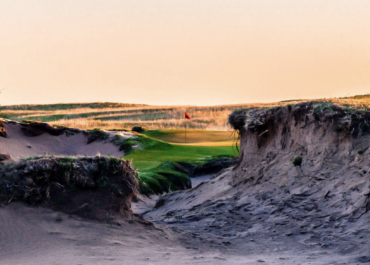
Horse Course is playful fun
Set adjacent to the Lodge, the 10-hole short course (the Horse Course), with an average length of 95 yards and undulating greens of about 2,000-square feet each, takes the game of “H.O.R.S.E.” to a whole new level. There are no tee boxes; the one who earned honor on the previous hole calls the next teeing place.
Grab a wedge, your putter, an adult beverage and your favorite cigar and enjoy the course that will challenge both your short game and imagination. The Horse Course just adds to the appeal of The Prairie Club and is a laid-back, no-stress way to end a day here.
Then there’s the “Old Wagon” putting course, a 150-yard area just below the Pines Course’s 18th hole where putting can get as wild as you want. There’s a little bit of everything here at The Prairie Club.
Yes, it’s a haul to get here – The Prairie Club is set 277 miles southwest of Sioux Falls, South Dakota, 323 miles northwest of Omaha and 373 miles northeast of Denver – but the trip is more than worthwhile and is a must on your golf bucket list.


